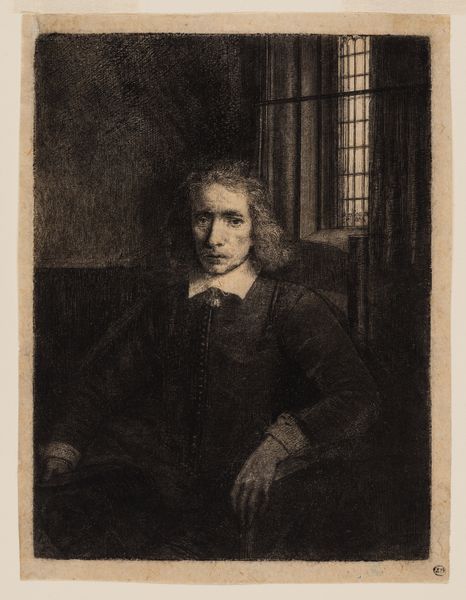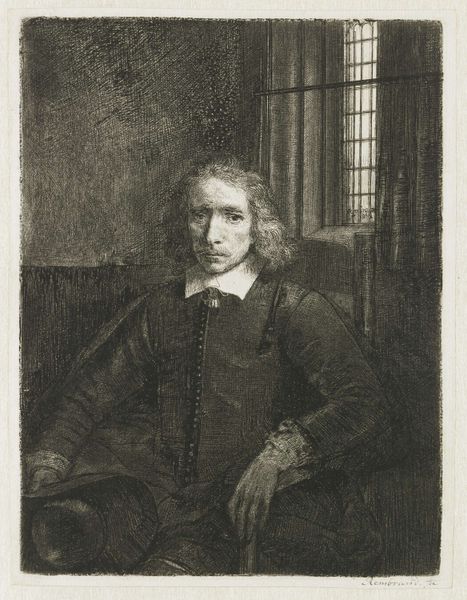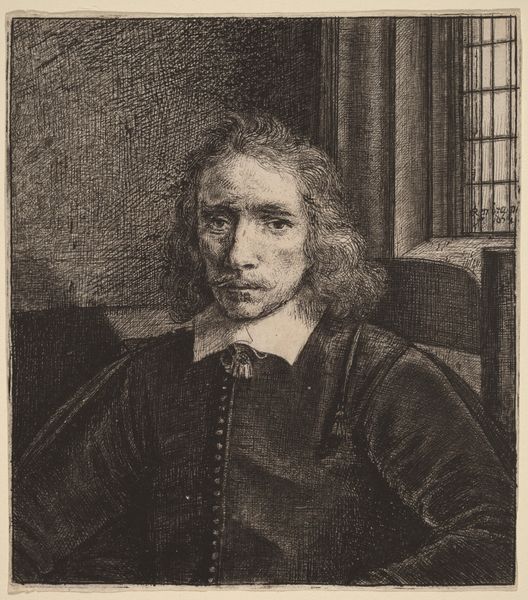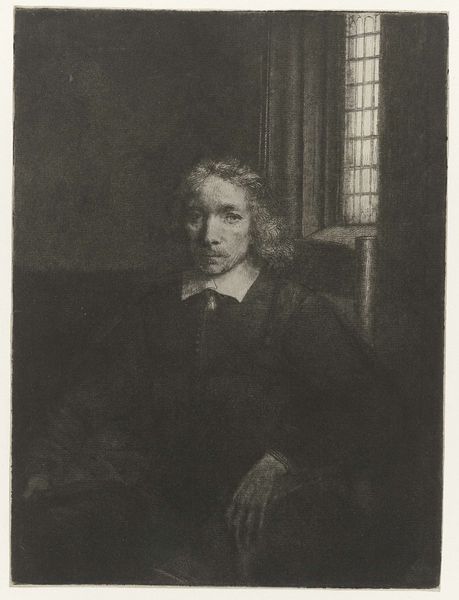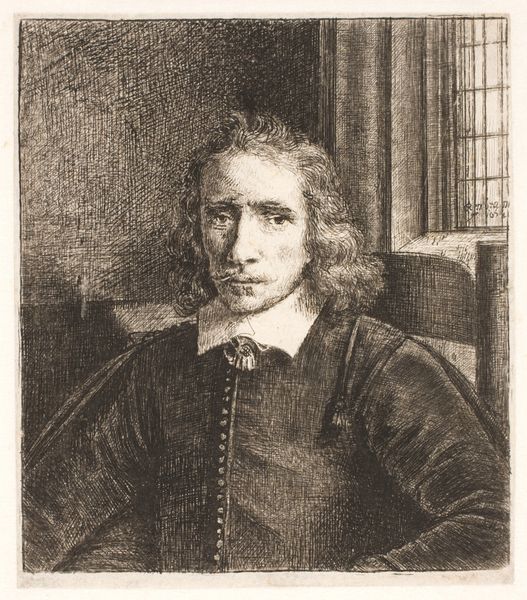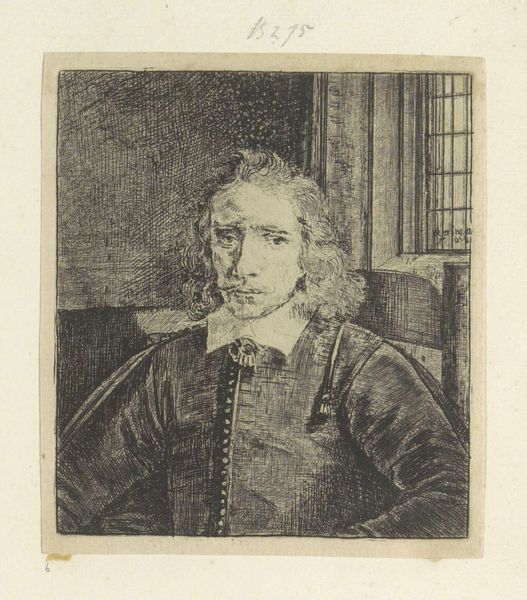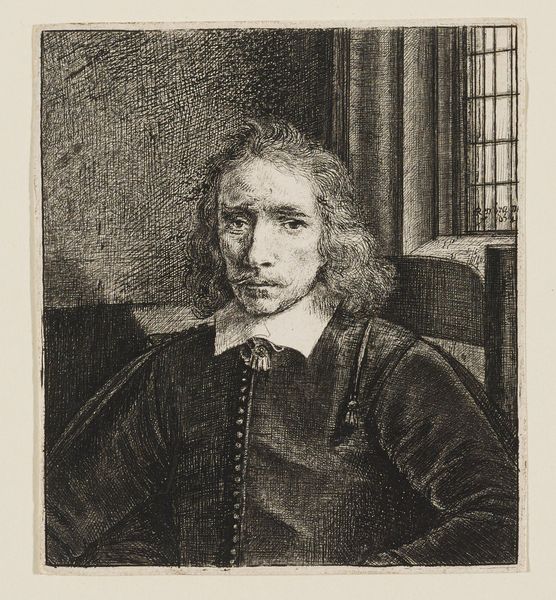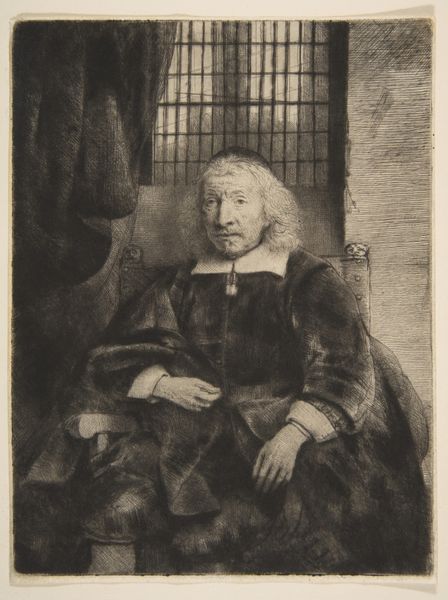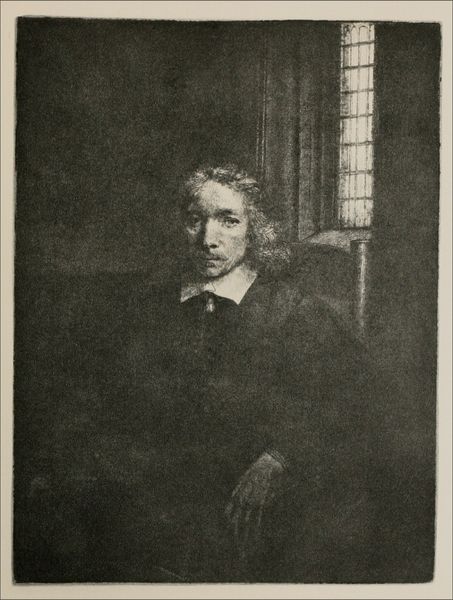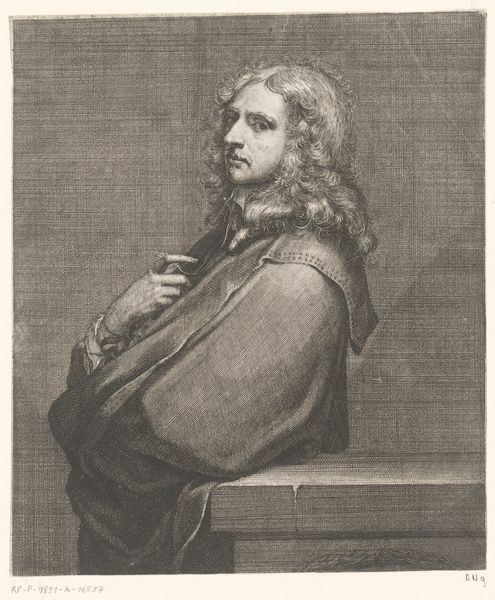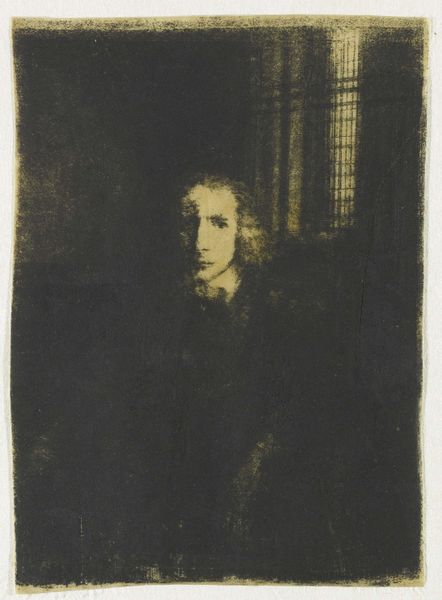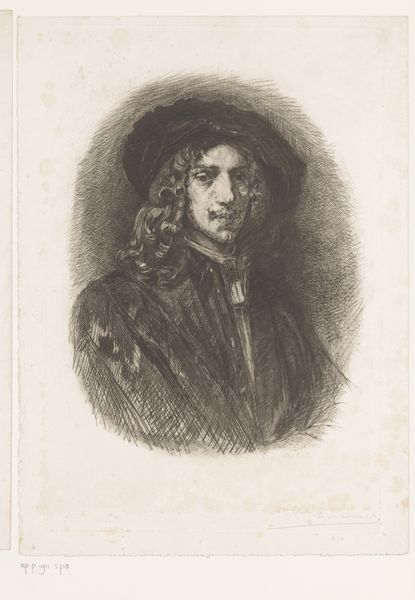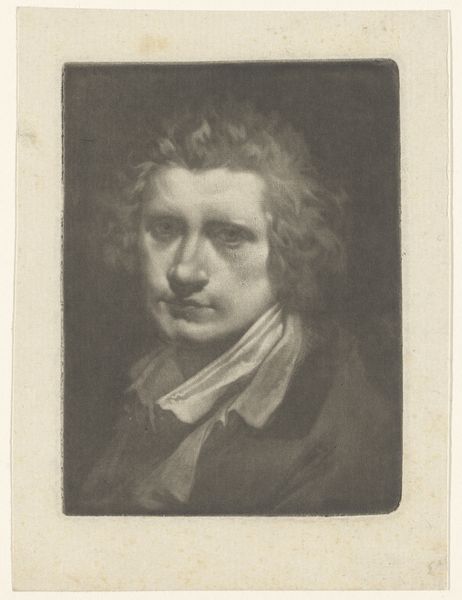
print, etching
#
portrait
#
baroque
#
dutch-golden-age
# print
#
etching
#
portrait drawing
#
realism
Dimensions: sheet (trimmed to plate mark): 19.8 x 15 cm (7 13/16 x 5 7/8 in.)
Copyright: National Gallery of Art: CC0 1.0
Curator: This etching by Rembrandt van Rijn, titled "Jacob Haaringh (Young Haaringh)," also known as "Pieter Haaringh", dates to 1655. It offers a penetrating glimpse into the Dutch Golden Age through the portrait of what's presumed to be a notable member of Amsterdam society. Editor: My first impression is somber and reflective. The chiaroscuro creates a deeply introspective mood, focusing our attention on his face. It also suggests that the weight of societal expectation falls heavily upon his shoulders. Curator: Indeed. Consider the social climate of 17th-century Amsterdam. It was a hub of burgeoning capitalism, scientific inquiry, and artistic innovation, but also intense social stratification. Haaringh, here, would have occupied a complex position within this matrix. The artwork serves not merely as a representation of wealth but suggests issues around identity, and possibly faith, within the emerging, secular Dutch society. Editor: I am fascinated by the recurring visual motif of the window to his left, divided into small, nearly identical panes. Given the context you've highlighted, it feels as if that grid might suggest confinement, mirroring the constraints of social class. The sitter seems trapped by invisible borders. The way Rembrandt captured it suggests psychological complexity. Curator: A potent reading. His clothing speaks of considerable means. We see the quality of fabric and embellishments, but Rembrandt avoids overt displays of extravagance. It lends further credence to your insight, placing more emphasis on internal contemplation over the mere demonstration of material success. He might be a critic of that class and system he belongs to. Editor: His eyes follow us as we move, it feels intimate, yet somewhat impersonal given that it's also very obviously staged. Curator: Agreed. Looking through the layers of Dutch history and personal details in Rembrandt's prints can enrich our understanding of intersectional and political narratives in art, particularly its links to gendered societal expectations. This etching subtly captures the human complexity of the time. Editor: Ultimately, through these delicate lines and calculated shadow-play, Rembrandt created more than a portrait; he crafted an icon that persists across centuries.
Comments
No comments
Be the first to comment and join the conversation on the ultimate creative platform.
